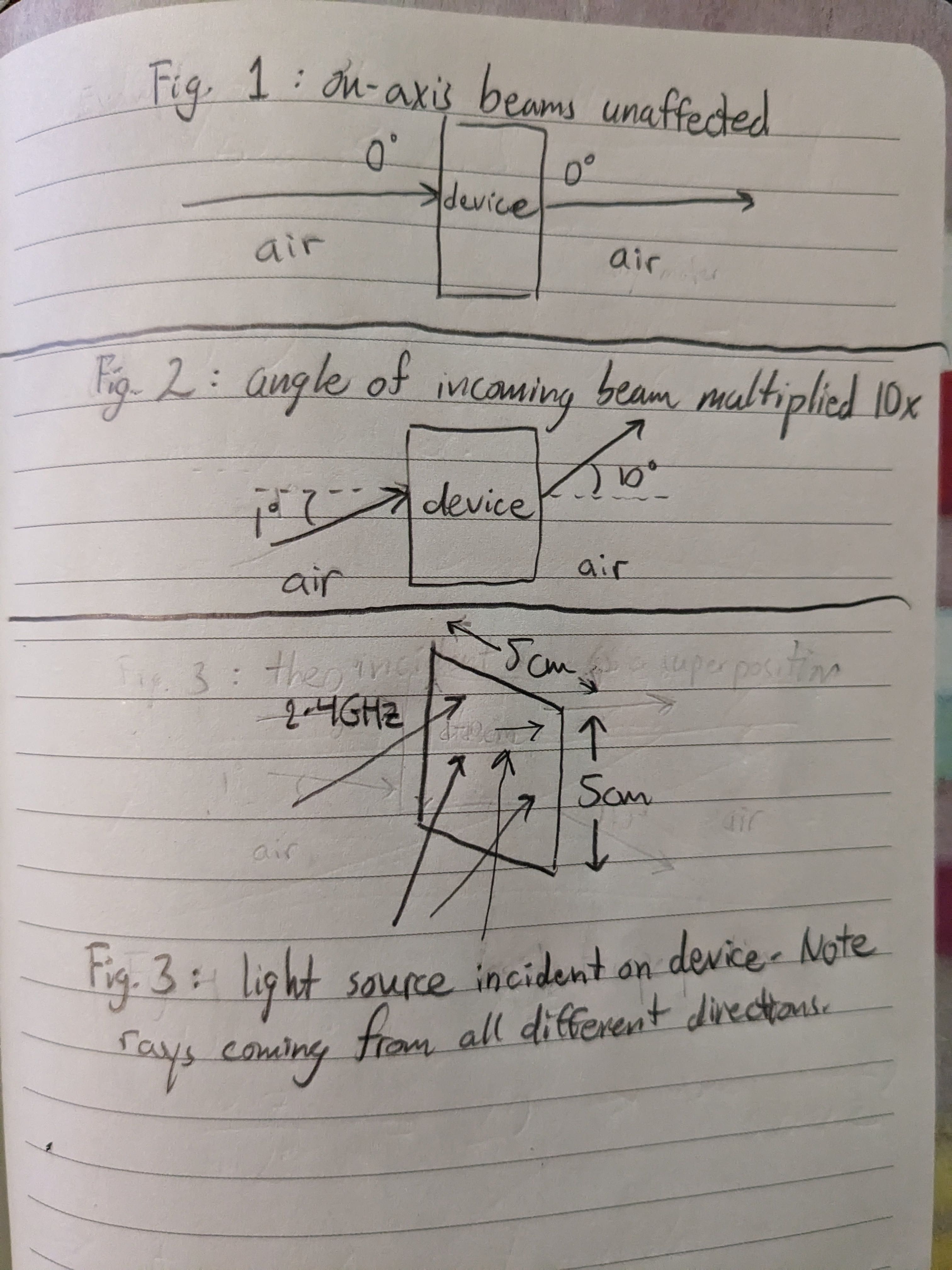Although JQK gave a good answer, this post is more of a comment rather than an answer, but it would not fit as a comment, so I post it as an answer instead.
Firstly I would like to ask: what is your actual purpose with the device? Because to me it seems that you are asking for some MEANS that you thought of to reach SOMETHING as an end result, while there might be a much better way to this "SOMETHING". Could you please specify your something instead of your thought of means to achieve it? (If this is not clear enough, an analogy: your end result (the something): painting a wall; your question "I would like something that intakes paint and shoots it in a cone" (basically what you thought of as means to achieve your something). However, as obvious from this example, there are 100s of ways on how to paint a wall).
Of course that there is a chance that I am wrong and what you ask here is literally the only solution to your problem after a lot of thought and knowledge about what you are doing. But it just seems to me that it is the former.
1:
I investigated converging and diverging lenses but these bend on-axis rays to focus them. Instead, I want to leave on-axis rays untouched
If you checked "diverging" lenses, than you should have seen that the focus is virtual, behind the lens, actually on axis rays remain unchanged. More on this later.
2:
I want to leave on-axis rays untouched and spread everything else out, by a strong factor (multiplying the angle by at least a factor of 10).
It seems to me that you are instead interested in isolating just a part of your incoming radiation, to separate those that are "on-axis" from other sources. This goes from my initial remark regarding your question not being clear about your intentions. If this is the case: you want to separate on axis from other sources than there is a much simpler solution: an aperture!
Simply take an aperture of 5x5cm² and make it long enough so that you have the desired angular cut-off. As I would assume that you still need some separation from your device to whatever you are doing next, as you need to be sure that you have enough separation between the on-axis and off-axis components, you can also make this quite longer, or use 2 apertures as on-axis singling out devices. HOWEVER, this now constitutes a waveguide and you need to look into waveguide physics.

